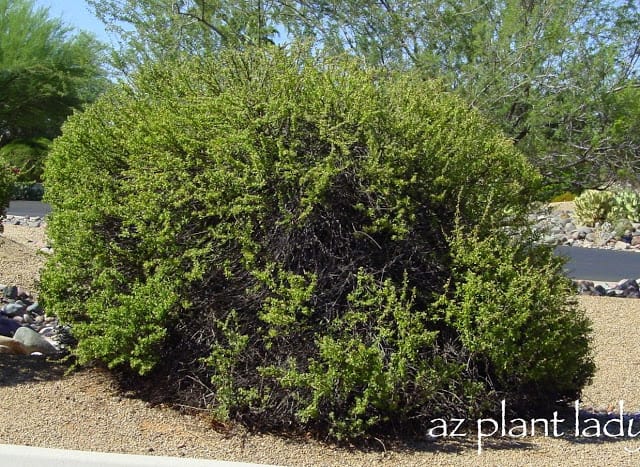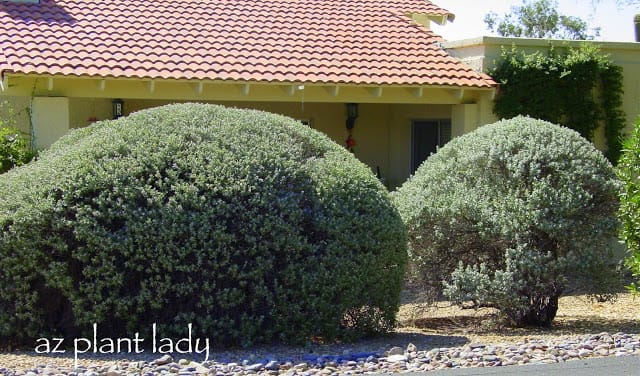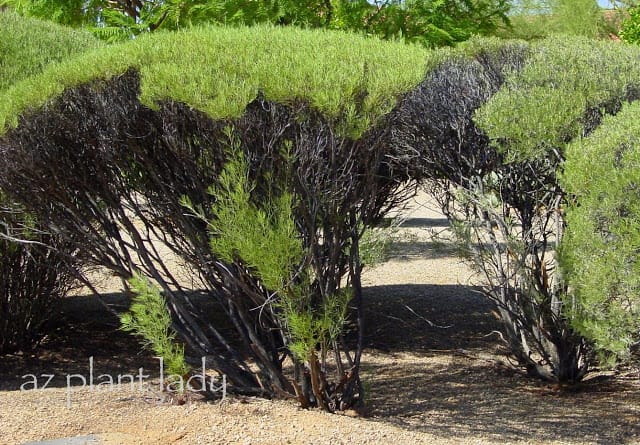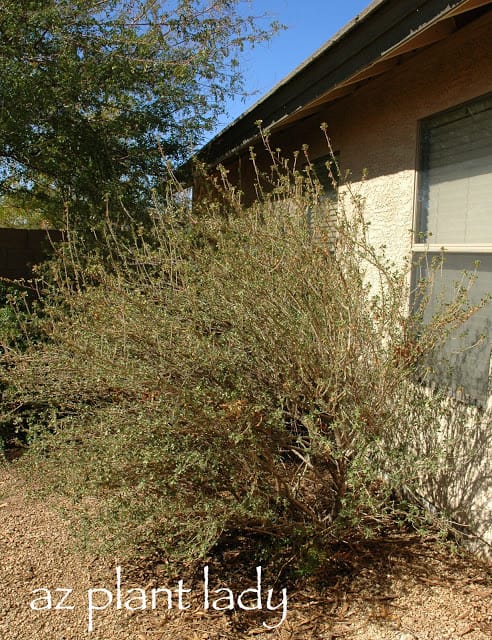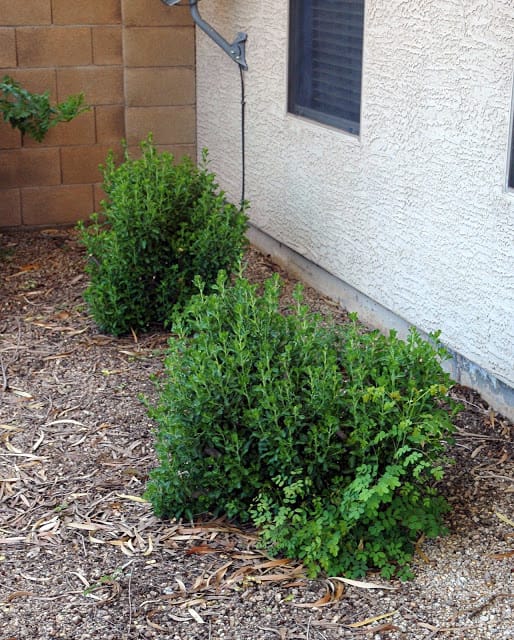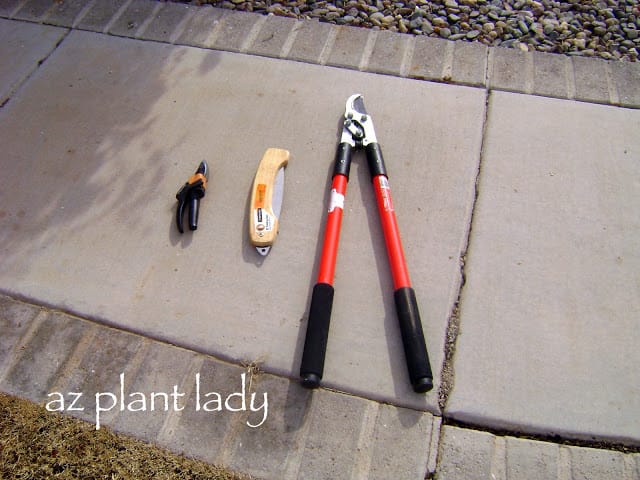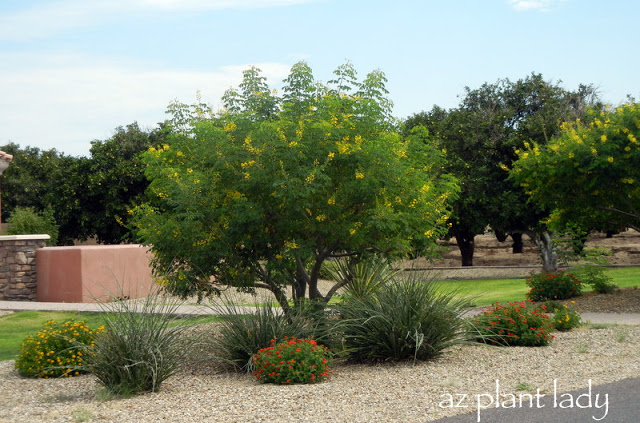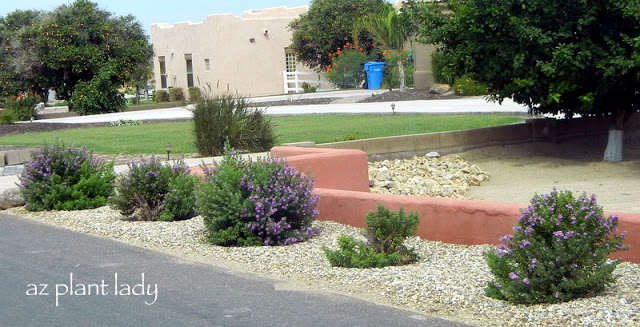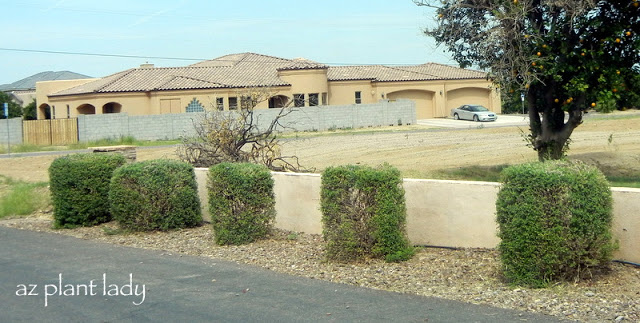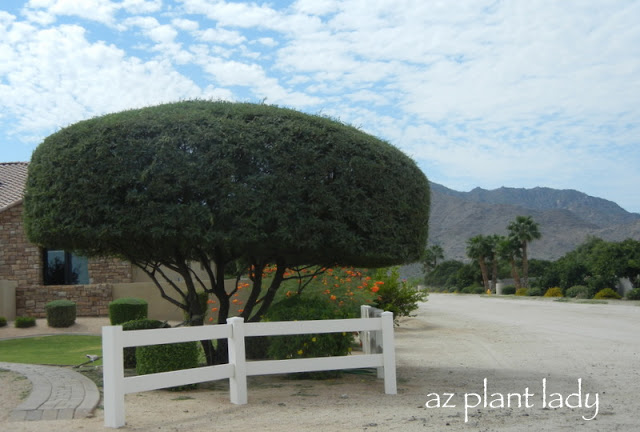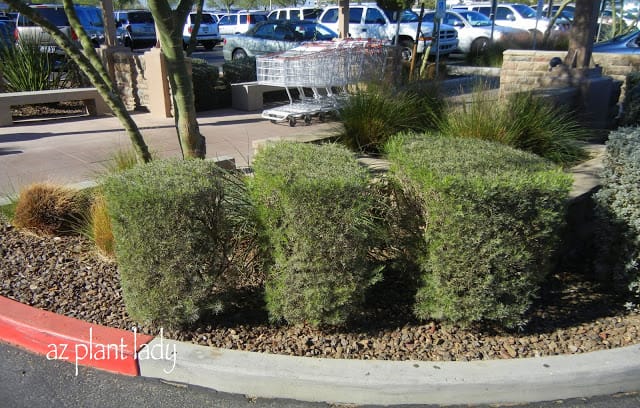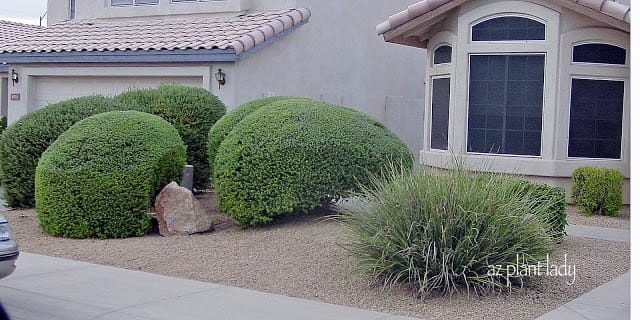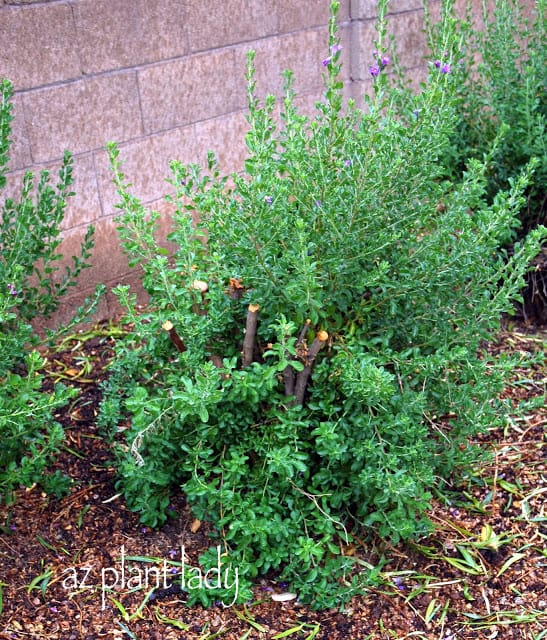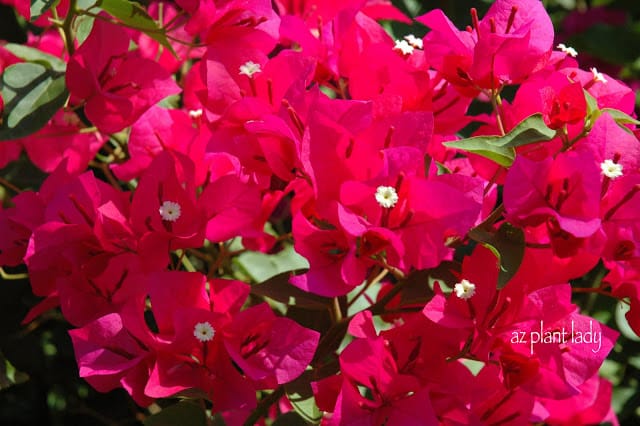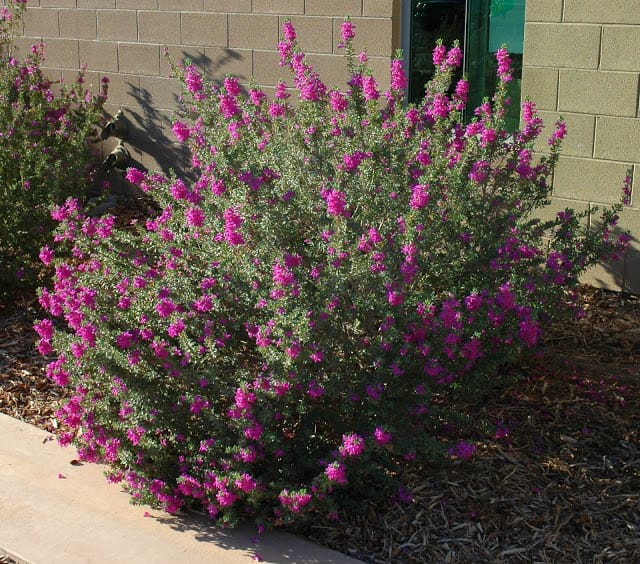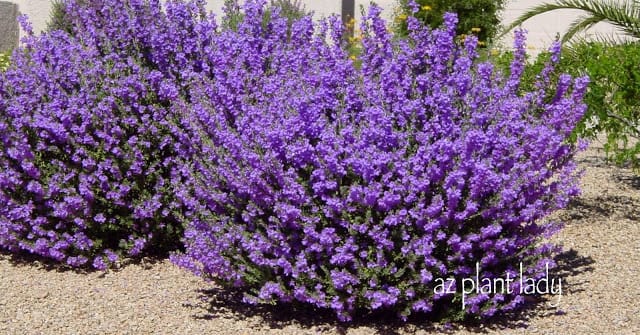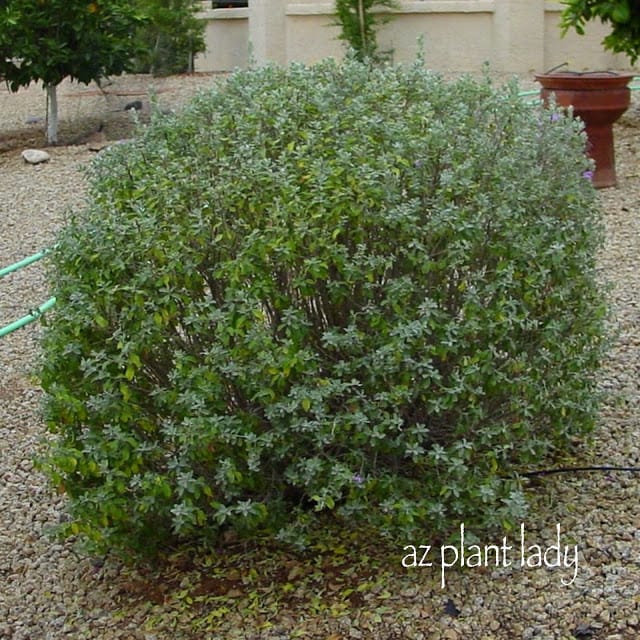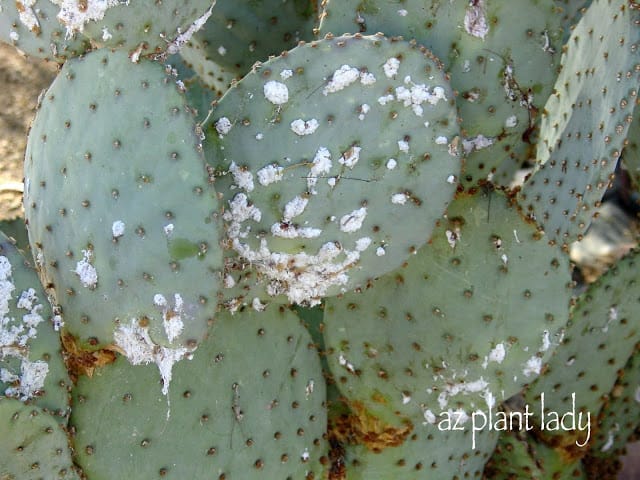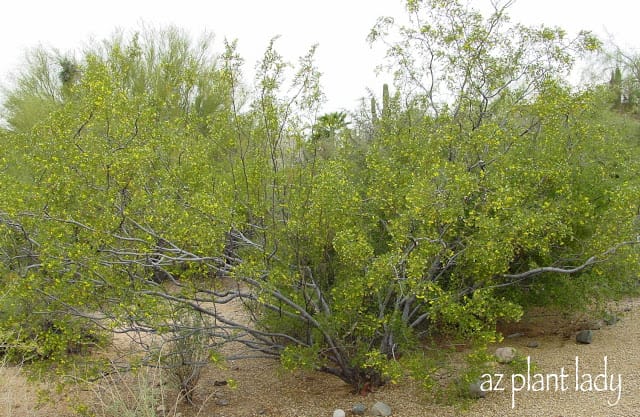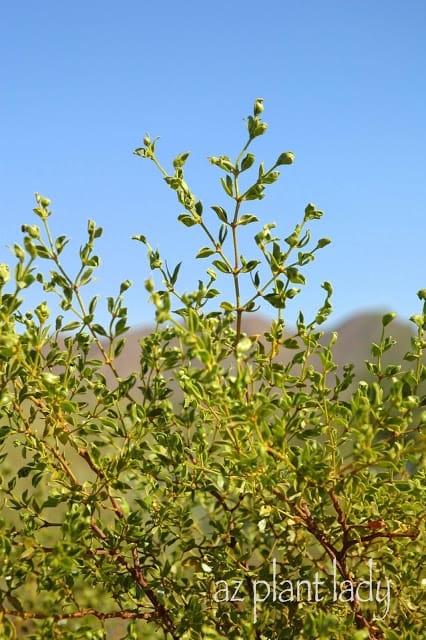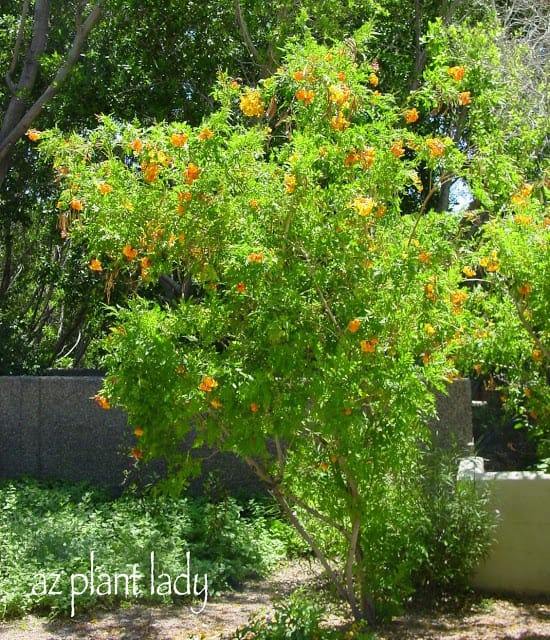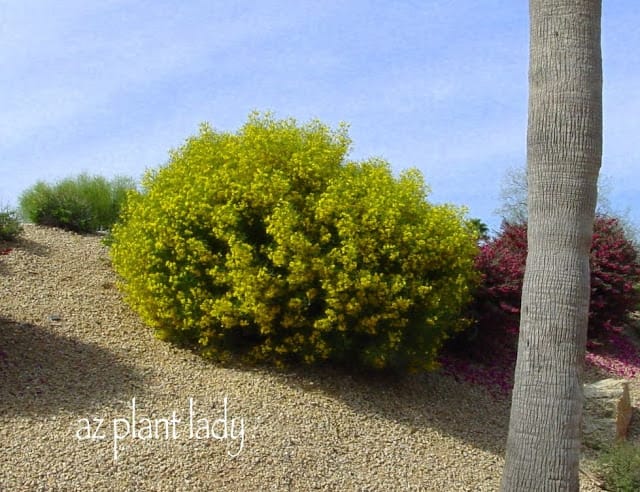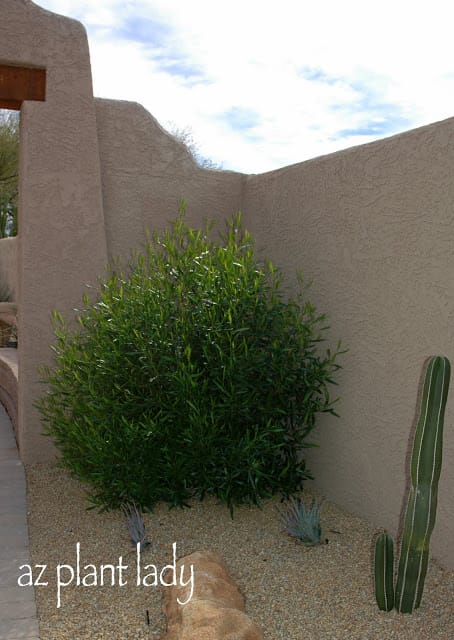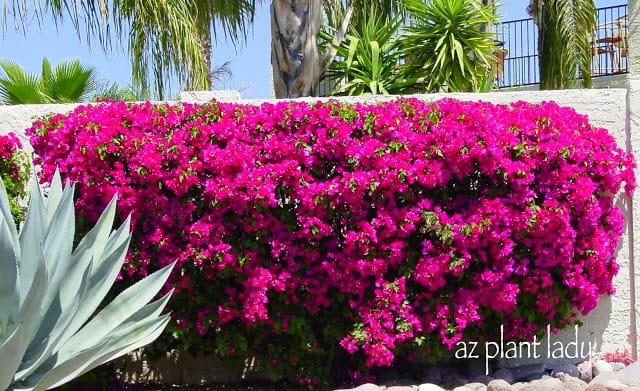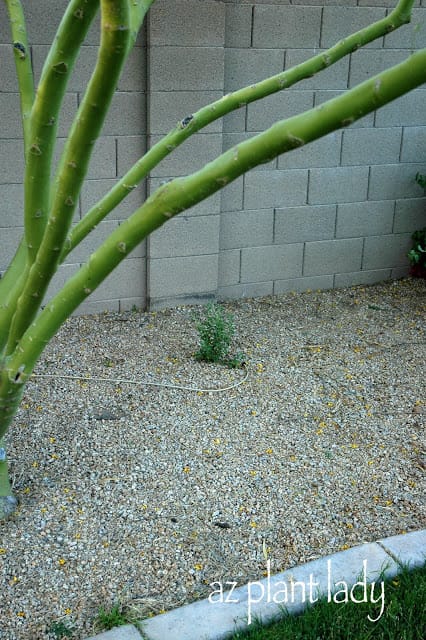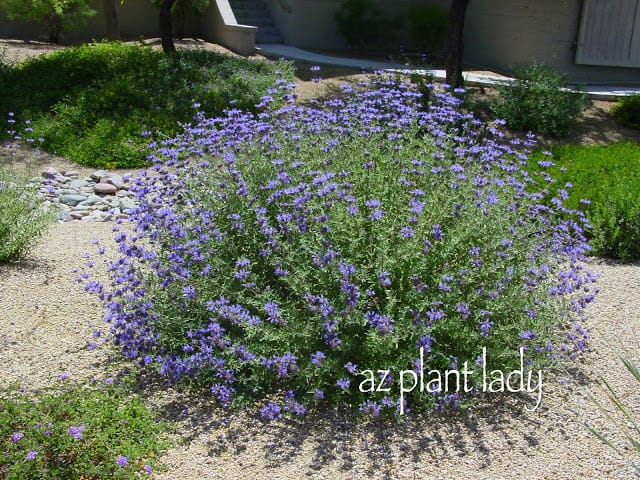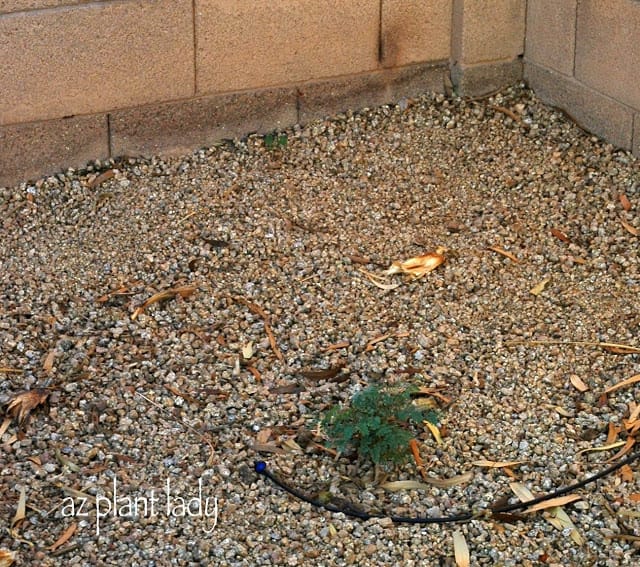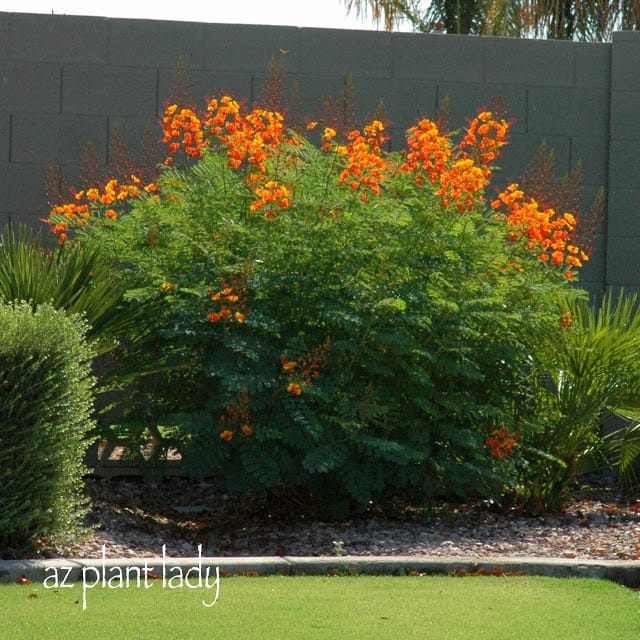Have you ever wondered how sustainable your landscape is?
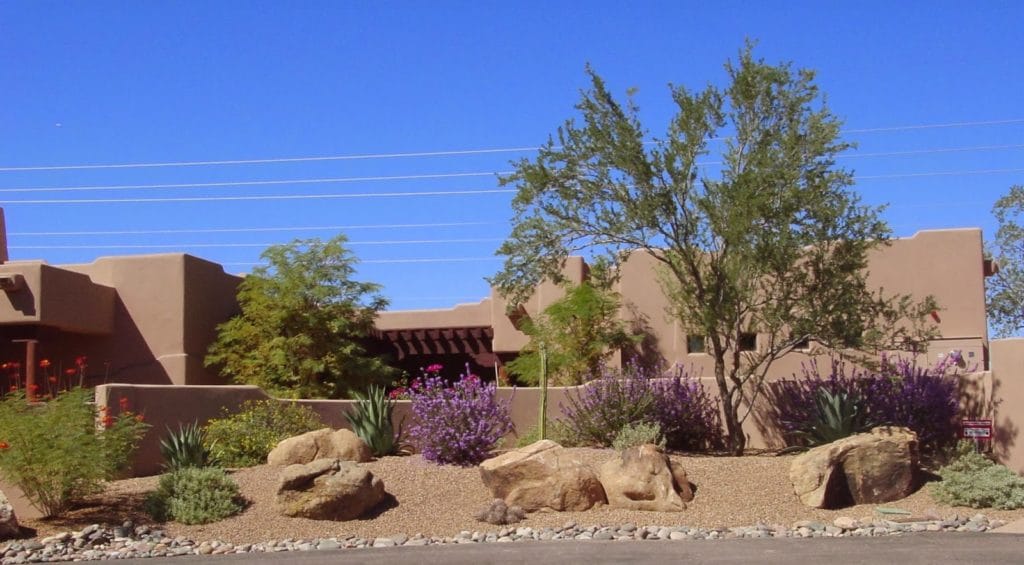
Earlier this week, we began our series of posts on sustainable landscaping and talked about what a sustainable landscape is. You can find the first post here.
Most of us like the idea of having an attractive landscape without wasting resources such as fertilizer, excessive pruning and water, time and gasoline unnecessarily. But, oftentimes we do things in our gardens that create the need for additional resources.
Today, we will look at one of the major problems that I see which often goes wrong and prevents people from having sustainable landscapes.
MISTAKE #1:
Most people fail to take into consideration how large their new plants will grow.
For example:
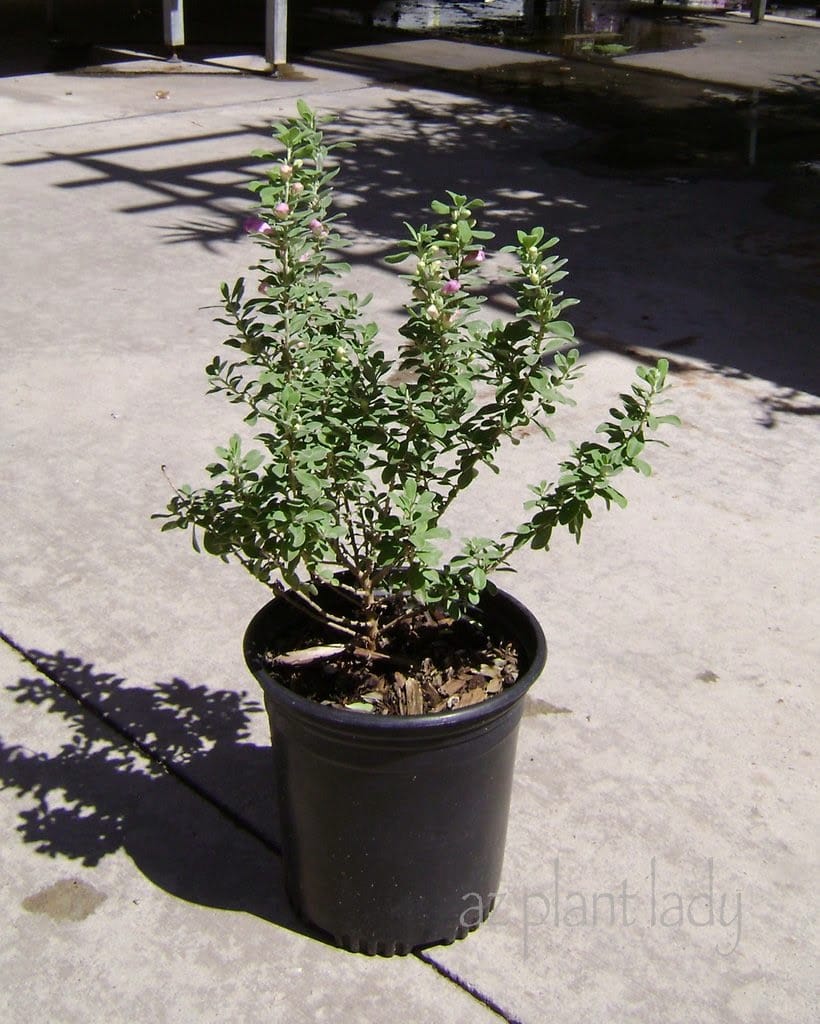
This young ‘Green Cloud’ Texas sage (Leucophyllum frutescens ‘Green Cloud’) measures roughly 1 foot high and wide.
But, just a few years after planting, it does grow quite a bit…
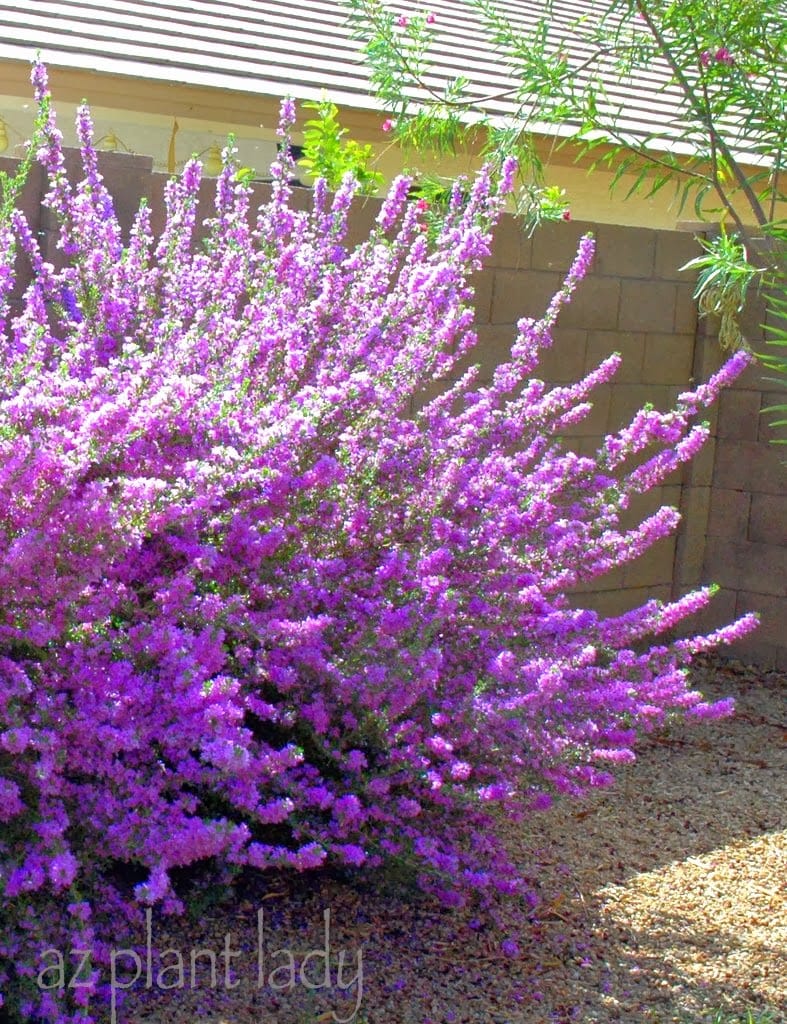
This ‘Rio Bravo’ sage (Leucophyllum langmaniae ‘Rio Bravo’), which is similar in size to ‘Green Cloud’ Texas sage reaches sizes up to 8 feet tall and wide.
It’s hard to believe that such a small shrub can grow so much in just a few years time.

This trailing rosemary was initially quite small when planted next to this boulder. However, the homeowner did not allow for the fact that the rosemary would grow and eventually ‘swallow’ the boulder.
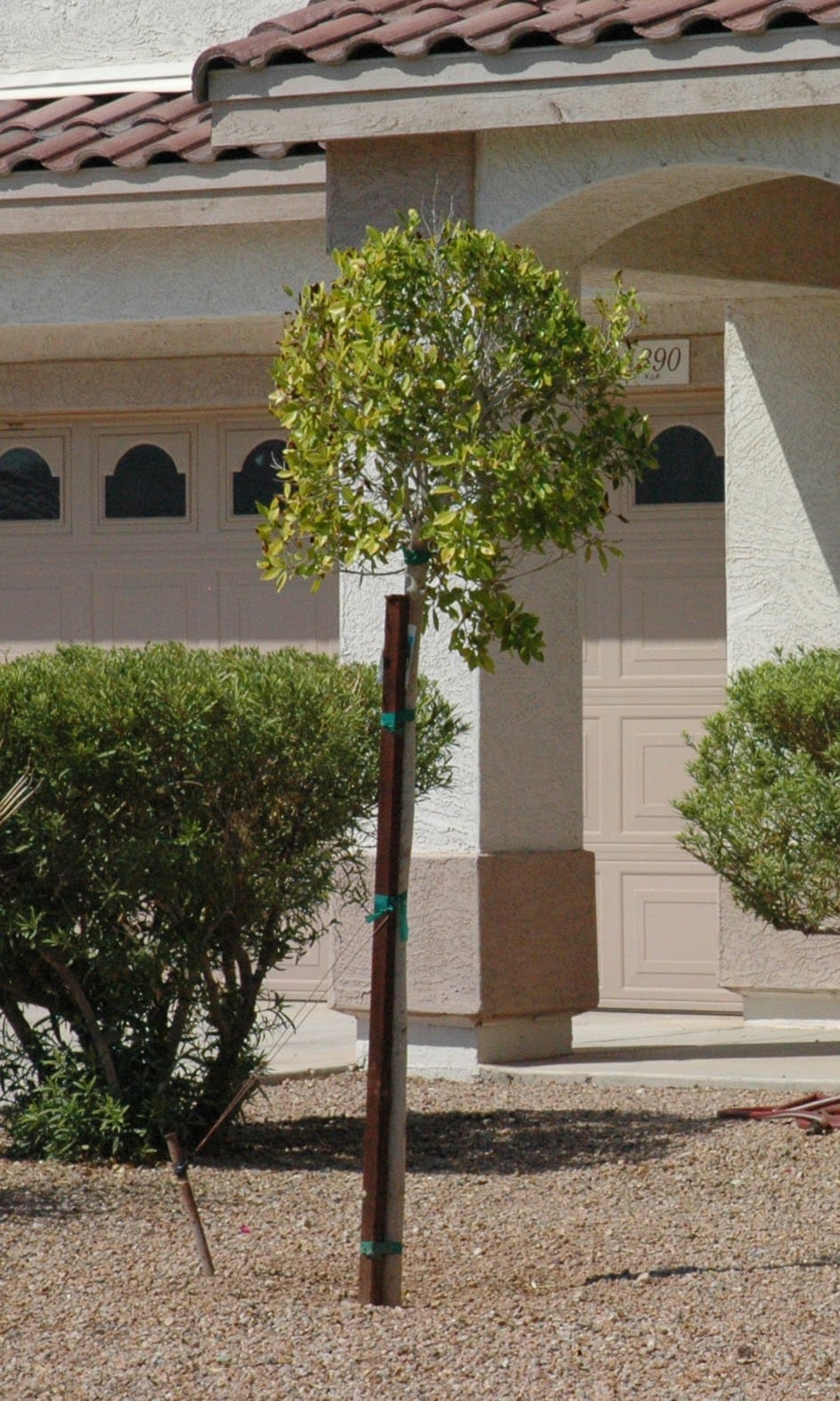
This small ficus tree looks rather innocent, doesn’t it? But, it is harboring a secret…
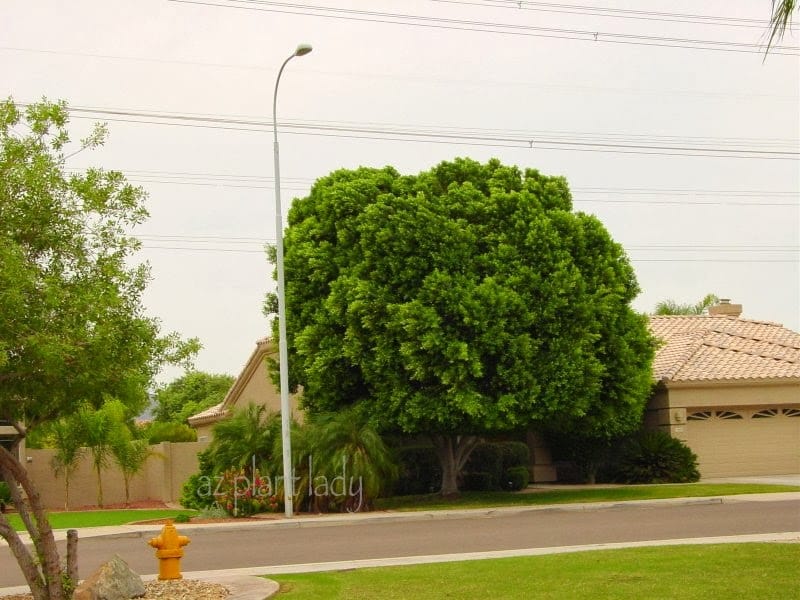
It will grow absolutely huge!
This ficus tree absolutely dwarfs this house.
The mistake of not allowing for the mature size of plants when planting, leads to…
MISTAKE #2:
Over-planting.
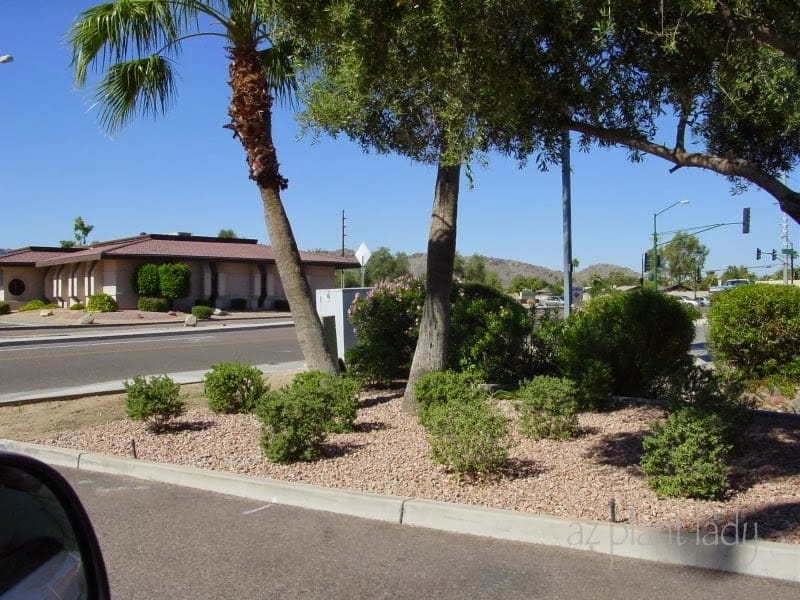
At first glance, there appears to be nothing wrong with this landscape area. There are some larger dwarf oleanders in the background and nine young Texas sage shrubs.
But, do you think that the Texas sage shrubs will fit in this area once they start to grow toward their mature size of 6 – 8 feet?
I don’t think so.
Over-planting occurs when people don’t allow for the mature size of the plants. Of course, new plants look rather small and somewhat straggly once first planted, which often leads to over-planting to make the new area look more attractive.
That is what happened to this area below…
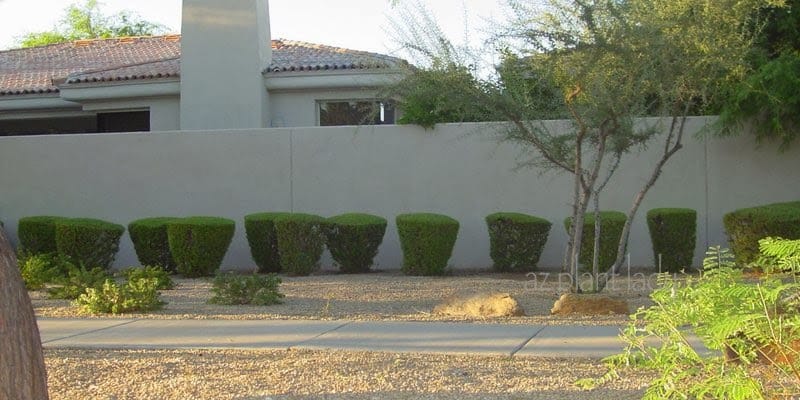
Would you believe that the shrubs planted above are actually the same as those shown below?
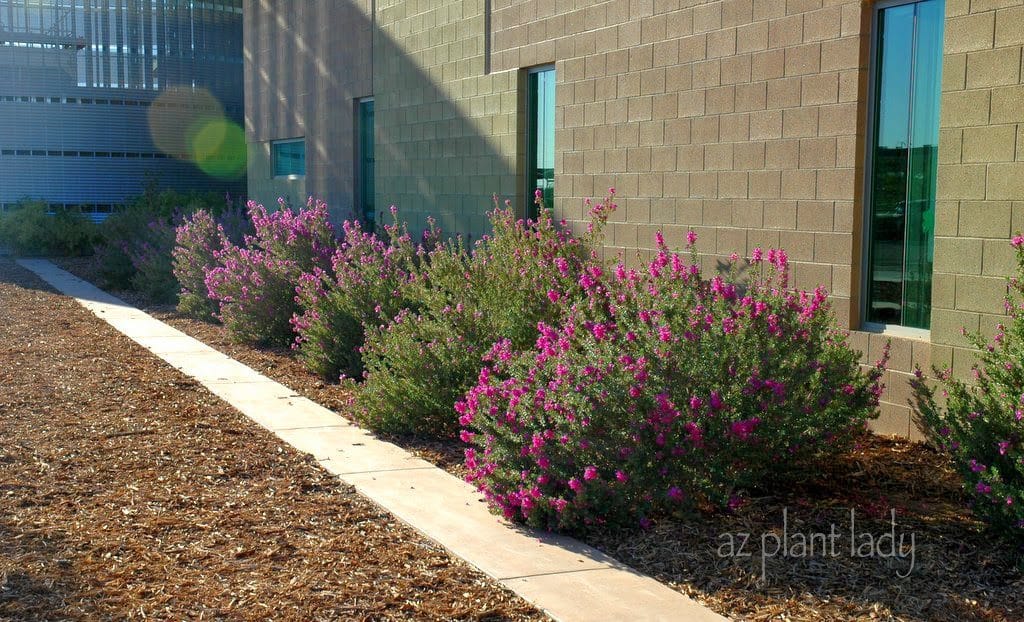
It’s true. The only difference is that in this space, the mature size of the shrubs was taken into account, so there was no over-planting taking place.
Think about how much less money and maintenance this area uses compared to the previous area? There are fewer plants, less maintenance and it looks much nicer!
Mistakes #1 and 2 lead us to…
MISTAKE #3:
Excessive pruning.
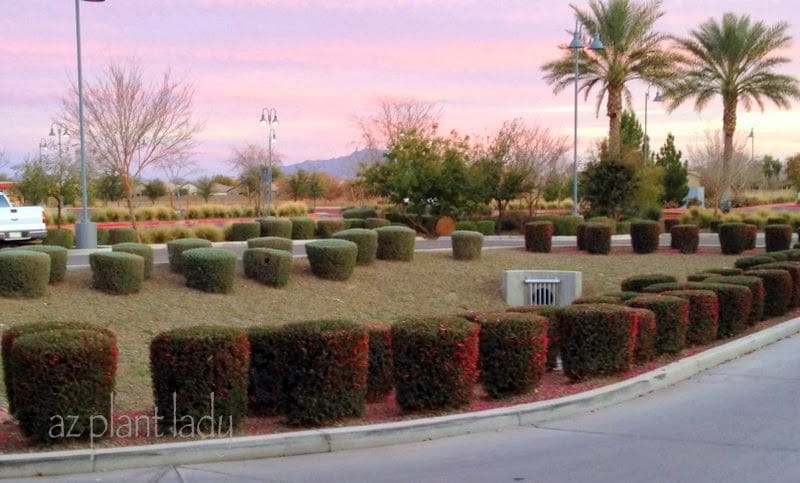
So, what do you think people do if their plants are planted to closely together – they prune them…a lot!
Drive-thru’s are places that you can usually find over-planted landscapes. The one above is filled with 2/3’s more plant material then is needed.
The over-pruned shrubs in the forefront are actually Valentine (Eremophila maculata ‘Valentine’) shrubs, which look much more attractive when not over-pruned.
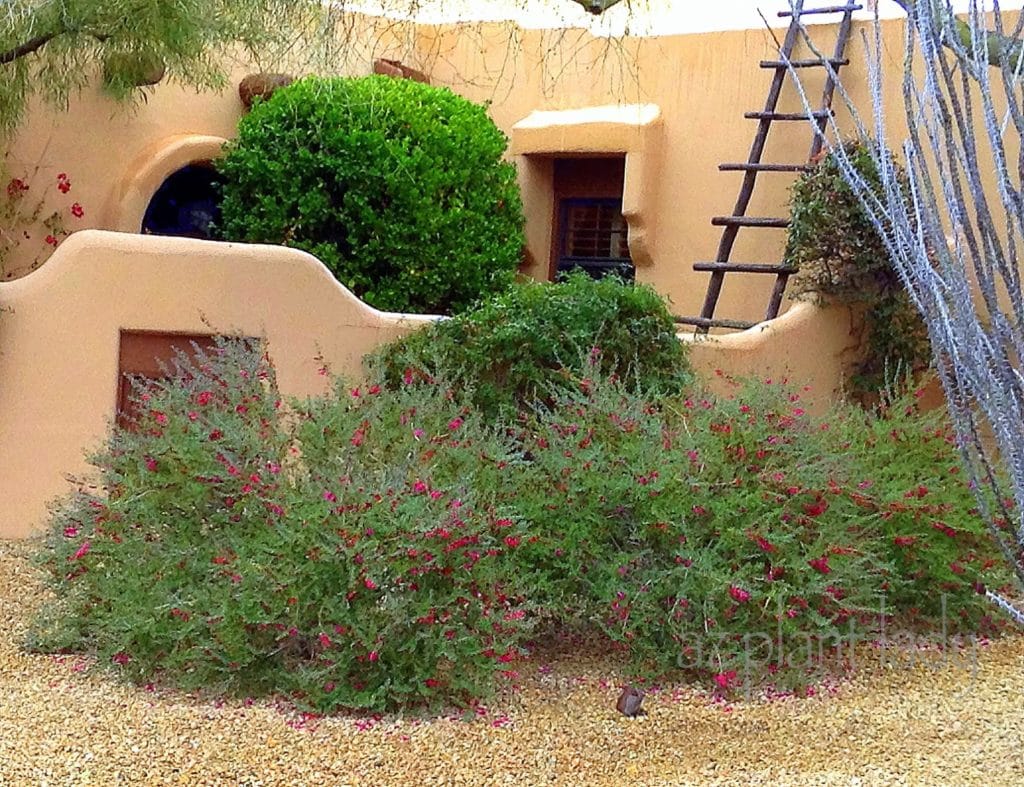
There are 3 Valentine shrubs in the photo above that are allowed to grow to their natural shape after their annual pruning in May.
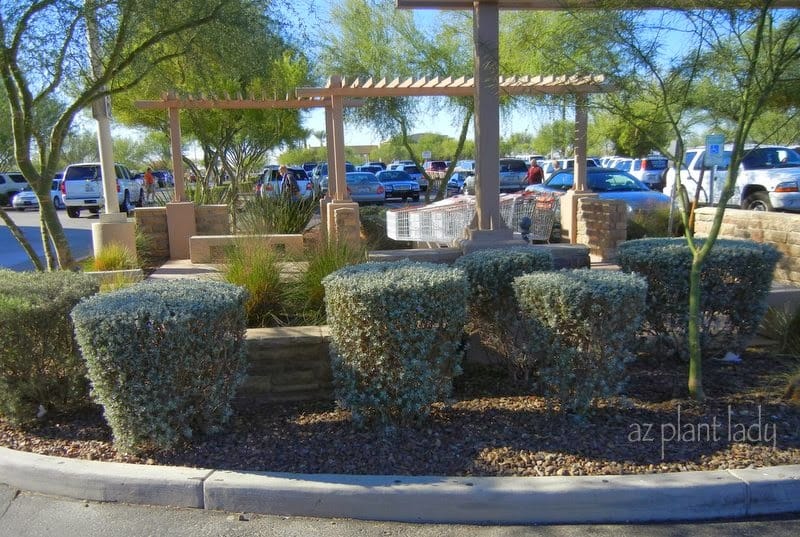
These silver sage shrubs at our local Costco store have also been over-pruned due to the fact that they were planted too closely together.
Over-pruning often leads to artistic expressions…
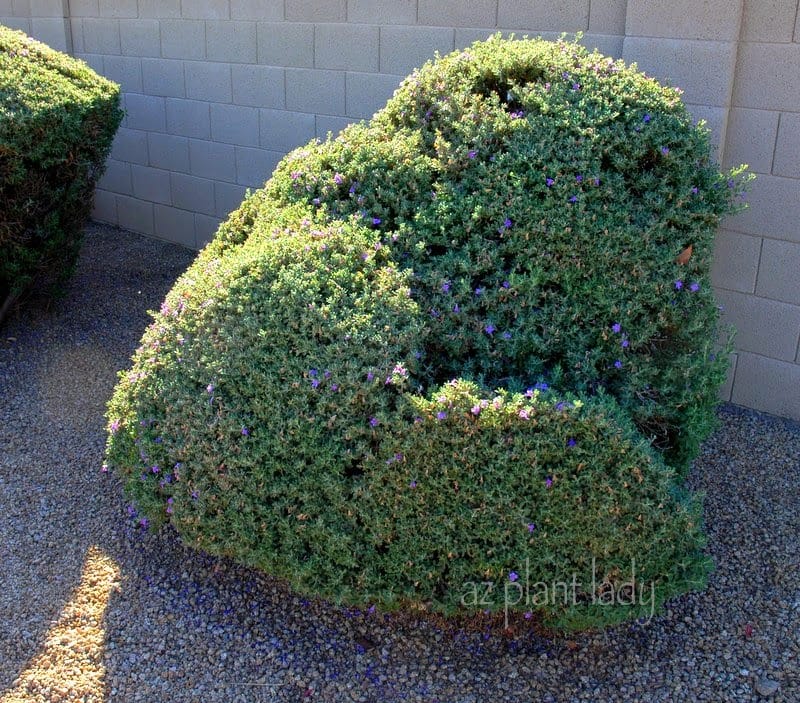
‘Abstract Art’

‘Mushrooms’

‘Cupcakes’
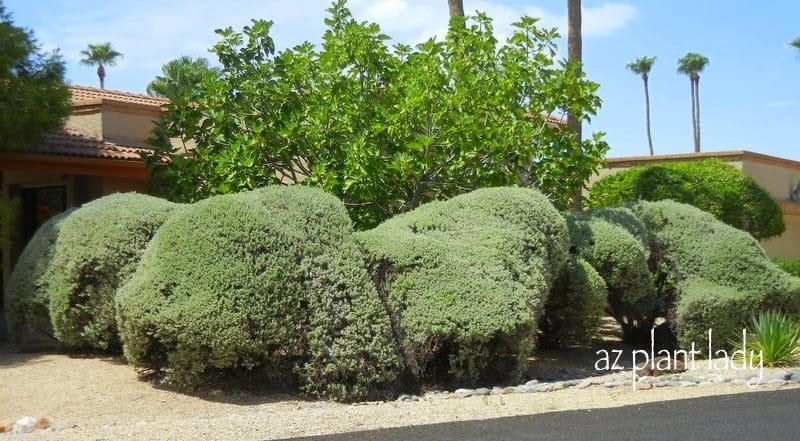
Words fail me attempting to describe the pruning of these sage shrubs.
Here are some interesting facts about over-pruning that you may be surprised to hear.
Over-pruning…
– makes plants grow faster (as they attempt to re-grow the leaves lost)
-creates more maintenance (faster growing plants tend to be pruned more often)
– uses more water (in their attempt to re-grow lost leaves pruned away).
– creates green waste (branches/leaves head to the landfill)
– leads to unhealthy plants (from the stresses of too much pruning).- wastes time used for un-needed pruning.
Have you ever seen the inside of shrubs that have been excessively pruned for years?
I warn you, it isn’t pretty…
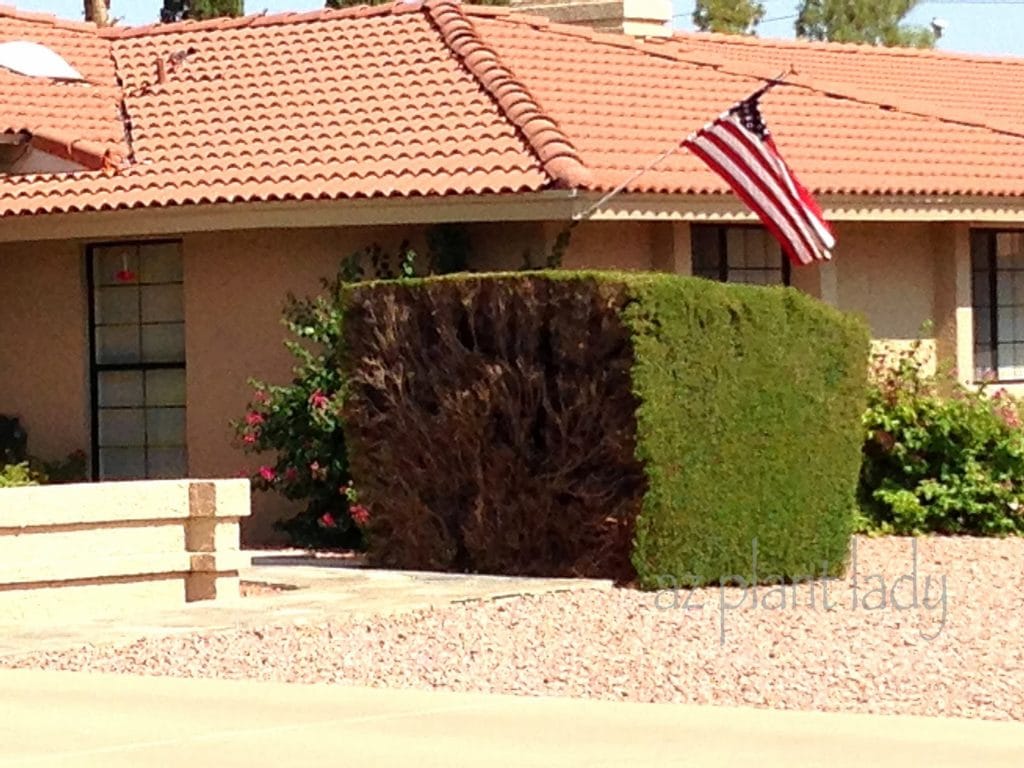
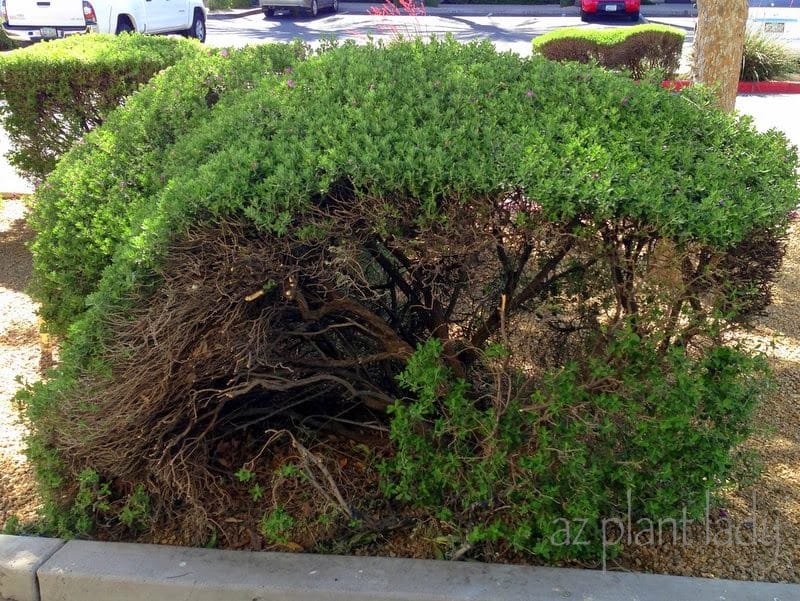
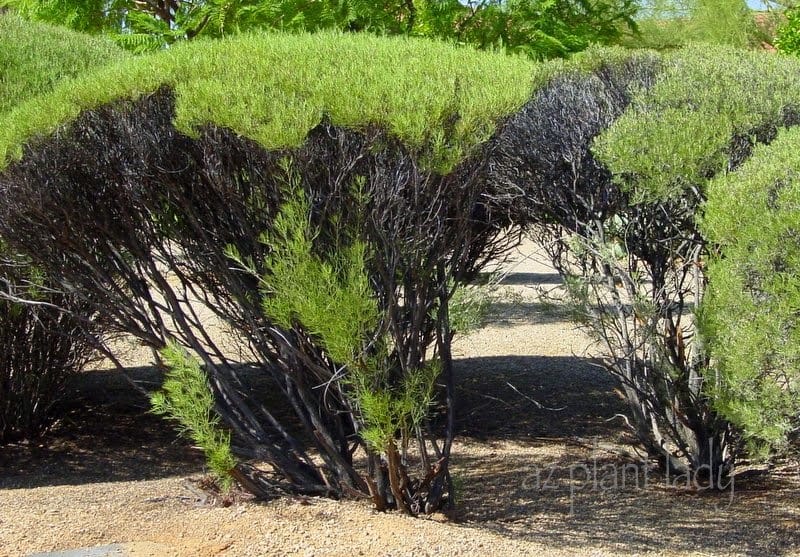
Not too pretty, is it?
Over time, flowering shrubs that have been excessively sheared, can develop large dead areas and eventually decline. This leads to old shrubs being removed and a new ones put in.
MISTAKE #4
Growing plants that aren’t adapted to your climate.
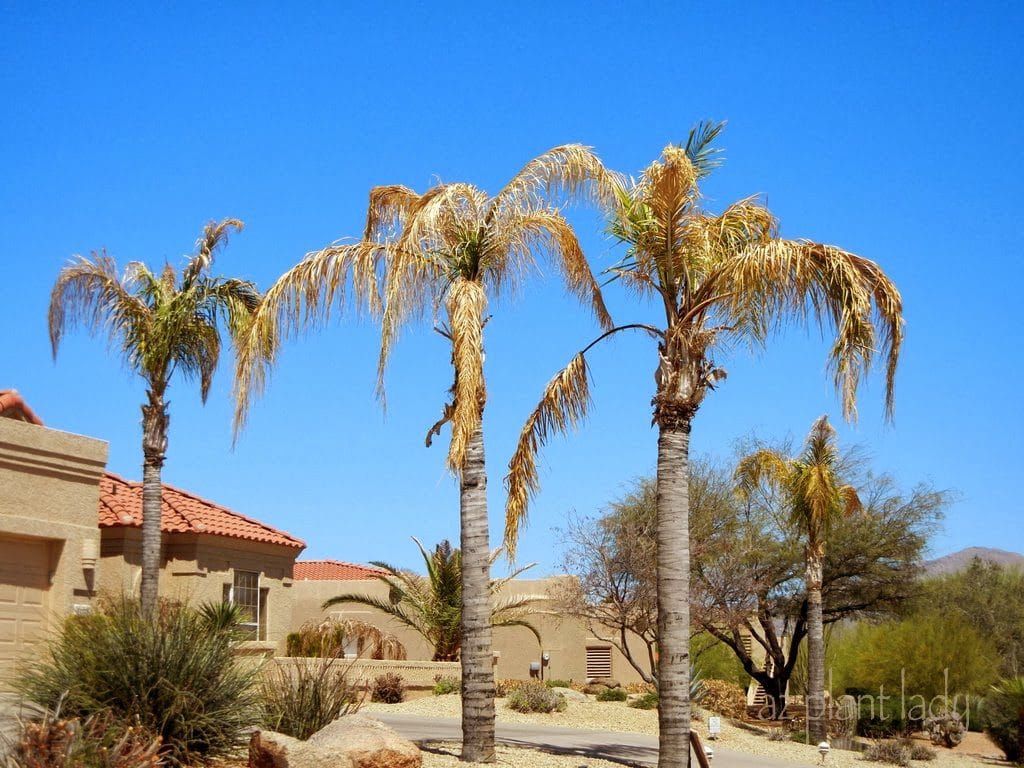
Plants that are not well-adapted to your local climate require excessive resources such as extra water, fertilizer and other maintenance.
Queen palms (Syagrus romanzoffianum) are just one example of a plant that often struggles in our southwestern, desert climate. No matter what we do, they will never look as nice as the queen palms growing in more tropical climates.
The lesson to be learned from this is that not planning for the mature plant size, over-planting, over-pruning and wrong plant selection uses up a lot of resources.
1. Excessive amounts of water are used due to over-planting, over-pruning and for plants not well-adapted to our arid climate.
2. Money is wasted on buying more plants then are needed.
3. The costs of maintenance used for excessive planting and pruning include another resource – gasoline.
4. Declining health of plants that have not been pruned properly or those ill-suited for our dry, hot climate.
************************
So how does your landscape compare with examples, above?
If you see some similarities – don’t worry. There are things that you can do to decrease the amount of resources that go into maintaining your landscape.
My goal is to help you toward not only a more sustainable landscape, but one that is also beautiful and attractive.
In my next post, we will start to talk about
“Small Steps Toward a Sustainable Landscape”.


